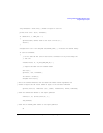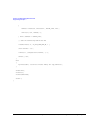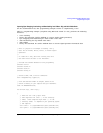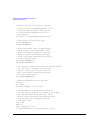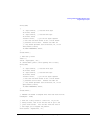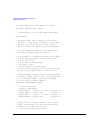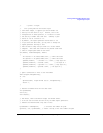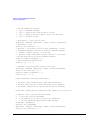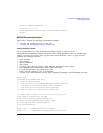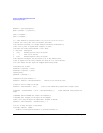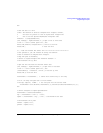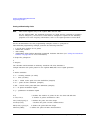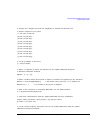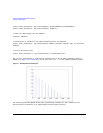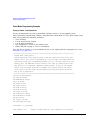
Agilent N518xA, E8663B, E44x8C, and E82x7D Signal Generators Programming Guide 255
Creating and Downloading Waveform Files
Programming Examples
iwrite(id, iqbuffer, bytesToSend, 0, 0);
iwrite(id, “\n”, 1, 1, 0);
printf(“Loaded FILE2 using the E4438C, E8267C and E8267D format\n”);
return 0;
}
MATLAB Programming Examples
This section contains the following programming examples:
• “Creating and Storing I/Q Data” on page 255
• “Creating and Downloading a Pulse” on page 258
Creating and Storing I/Q Data
On the documentation CD, this programming example’s name is “offset_iq_ml.m.”
This MATLAB programming example follows the same coding algorithm as the C++ programming
example “Creating and Storing Offset I/Q Data—Big and Little Endian Order” on page 232 and
performs the following functions:
•error checking
• data creation
• data normalization
• data scaling
• I/Q signal offset from the carrier (single sideband suppressed carrier signal)
• byte swapping and interleaving for little endian order data
• I and Q interleaving for big endian order data
• binary data file storing to a PC or workstation
• reversal of the data formatting process (byte swapping, interleaving, and normalizing the data)
function main
% Using MatLab this example shows how to
% 1.) Create a simple IQ waveform
% 2.) Save the waveform into the Agilent MXG/ESG/PSG Internal Arb format
% This format is for the N5182A, E4438C, E8267C, and E8267D
% This format will not work with the earlier E443xB ESG
% 3.) Load the internal Arb format file into a MatLab array
% 1.) Create Simple IQ Signal *****************************************
% This signal is a single tone on the upper
% side of the carrier and is usually refered to as
% a Single Side Band Suppressed Carrier (SSBSC) signal.
% It is nothing more than a cosine wavefomm in I
% and a sine waveform in Q.
%
points = 1000; % Number of points in the waveform
cycles = 101; % Determines the frequency offset from the carrier



